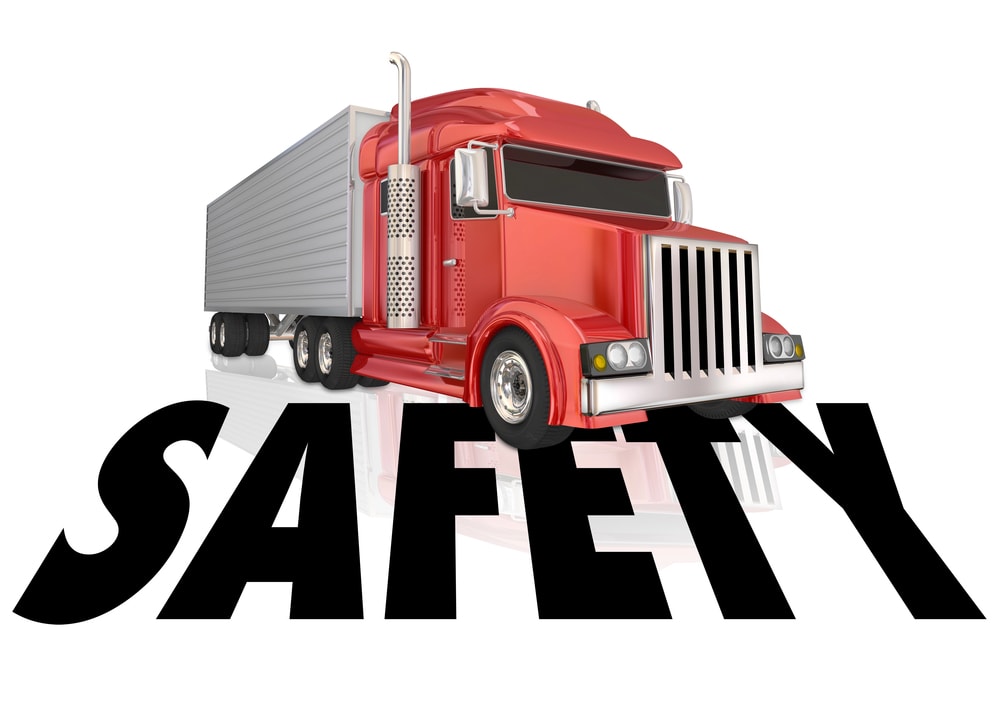The trucking industry moves goods across the country, but with that comes the risk of strategic cargo theft. As drivers hit the road and manage their time, they have to prioritize supply chain security by choosing safe parking and staying alert to thieves.
Cargo theft is a growing problem, with fictitious pickups, unauthorized access, and unsecured parking lots creating opportunities for thieves. Without proper safety measures in place, carriers and shippers lose valuable freight and suffer financial losses and supply chain disruptions.
Dispatchers, carriers, and shippers need to work together to implement security measures that protect drivers and cargo. That means planning secure parking, using anti-theft technology, and educating drivers on best practices to reduce cargo theft. In this article, we’ll cover how to park safely and prevent thieves from targeting your trailer and freight on the road.

Understanding Cargo Theft
Cargo theft is a constant threat in the trucking industry, with thieves always finding new ways to steal freight. Whether they target commercial vehicles at unsecured parking lots or exploit vulnerabilities in online load boards, criminals look for opportunities to intercept shipments. Knowing the risks of cargo theft and high-risk locations helps drivers and carriers take proactive security measures.
Common Cargo Theft Methods
Thieves use many methods to steal shipments, often targeting trailers and freight in low-security areas. Here are some of the most common:
Pickups from Fictitious Carriers
Criminals pose as legitimate carriers on online load boards, using fake credentials to pick up loads they never intend to deliver.
Shippers and dispatchers need to verify all carriers to avoid falling victim to this type of cargo theft.
Breaking into Trailers at Unsecured Parking Lots
Thieves take advantage of unmonitored parking lots, cutting locks or breaking into trailers to steal high-value goods.
Poor lighting and lack of police presence increase the risk in these areas.
Targeting Truck Stops and High Crime Areas
While truck stops are convenient for drivers, not all are secure. Some truck stops are hotspots for cargo theft, especially those in high crime areas with little surveillance.
Parking at well-lit, secure truck stops with controlled access can help mitigate these risks.
Criminals in Organized Cargo Theft Networks
Many cargo theft incidents are part of larger organized crime rings.
Thieves work in teams, using stolen data from online load boards to identify valuable shipments and target freight in unsecured locations.
High-Risk Areas for Cargo Theft
Cargo theft can happen anywhere, but some areas are higher risk due to a lack of security and high crime rates.
Parking Lots with Poor Lighting and No Police Presence
Dark parking lots are easier for thieves to operate in.
Park in well-lit areas or secure commercial vehicle yards with surveillance.
Unsecured Commercial Vehicle Yards
Some commercial vehicle storage facilities have no controlled access, making them easy targets.
Always verify a yard has strong fencing, security personnel, and a camera system before leaving a trailer unattended.
Unverified Truck Stops on Online Load Boards
Not all truck stops are created equal—some have no security and attract criminals looking for easy targets.
Verify truck stops before stopping and choose those with a good reputation.
Unmonitored Freight Depots
Some freight depots have minimal security, leaving trailers vulnerable to thieves.
Carriers should ensure that freight handoff happens in secure, monitored areas.

Best Practices for Safe Truck Parking
Securing a safe place to park is key to protecting both freight and drivers from threats. Choosing secure locations, planning ahead, and using technology can minimize risks in parking lots and truck stops, especially at night when safety concerns increase.
Park in a Safe Place
Park at truck stops with cameras and restricted access to deter criminals.
Avoid isolated parking lots with poor lighting that can make your trailer a target.
Be Strategic at Night
Park near other drivers and well-lit truck stops to increase visibility and safety.
Use a dash cam to monitor your surroundings in high-risk areas.
Plan Parking Locations Ahead
Schedule stops in secure commercial motor vehicle rest areas to avoid last-minute decisions.
Check online load boards for verified truck stops with secure parking lots.
Work with your dispatcher to arrange safe trailer parking at trusted locations.

Defensive Driving and Cargo Theft
Defensive driving is a key strategy for truck drivers to stay safe on the road and prevent cargo theft. By being aware of road conditions, using signals, and monitoring their surroundings, drivers can reduce accidents and avoid dangers.
Defensive Driving
Be aware of blind spots and always check before a lane change to avoid collisions.
Maintain a safe distance from other vehicles to avoid accidents in poor road conditions.
Don’t speed, and stay in control of your truck, especially in an unpredictable environment.
Use Signals and Monitor Surroundings
Always use your turn signal when you change lanes to be visible to other drivers.
Look for suspicious signs, like unauthorized carriers or mismatched credentials from supposed legitimate carriers.
Monitor Other Drivers and Traffic
Be aware of other drivers acting strangely in parking lots or at truck stops.
If you see a suspicious vehicle near your truck, report it to the police or your dispatcher.

Security Measures for Freight and Equipment
Protecting cargo from theft requires technology, secure processes, and well-maintained vehicles. Thieves target trailers and equipment in unsecured areas, so companies and truck drivers need to have strong security measures in place.
Anti-Theft Technology
Install dash cams and GPS tracking on trailers and equipment to monitor for suspicious activity.
Use high-security locks to protect freight and deter thieves from breaking into a trailer.
Keep Cargo and Freight Details Private
Restrict access to load details to authorized personnel to prevent fictitious pickups.
Verify every legitimate carrier before handing over freight to ensure the load goes to the right company.
Regular Vehicle Maintenance
Check the power steering fluid, tires, and brakes to prevent mechanical failure that can leave a truck stranded in high-risk areas.
Inspect lights, equipment, and trailer locks before parking to ensure all security measures are in place.

Collaboration Across the Industry
Cargo theft requires everyone in the trucking industry to work together. By working with police, shippers and carriers companies can strengthen supply chain security and reduce theft. Build relationships and stay informed on security trends to keep your freight safe.
Work with Law Enforcement and Shippers
Establish strong relationships with police, shippers, and carriers to improve communication and response to security threats.
Report any suspicious activity to stop strategic cargo theft before it happens. Companies should follow best practices for safety and security when handing over freight.
Get Involved in Theft Prevention Initiatives
Participate in industry-led safety and security programs to combat cargo theft.
Stay up to date on strategic cargo theft trends to anticipate and prevent.

Parking in a safe place and having strong security measures are key for truck drivers and carriers to prevent theft. Choose well-lit, monitored parking lots, use anti-theft technology, and be aware of suspicious activity to reduce risk.
Defensive driving, road condition monitoring, and maintaining equipment like locks, freight tracking devices, and proper lighting all contribute to a safer and more secure trucking industry. By prioritizing supply chain security, drivers can protect their freight, avoid danger, and deliver.
Stay proactive and follow these best practices to keep your loads secure, your route safe, and your role in the trucking industry protected from threats.
